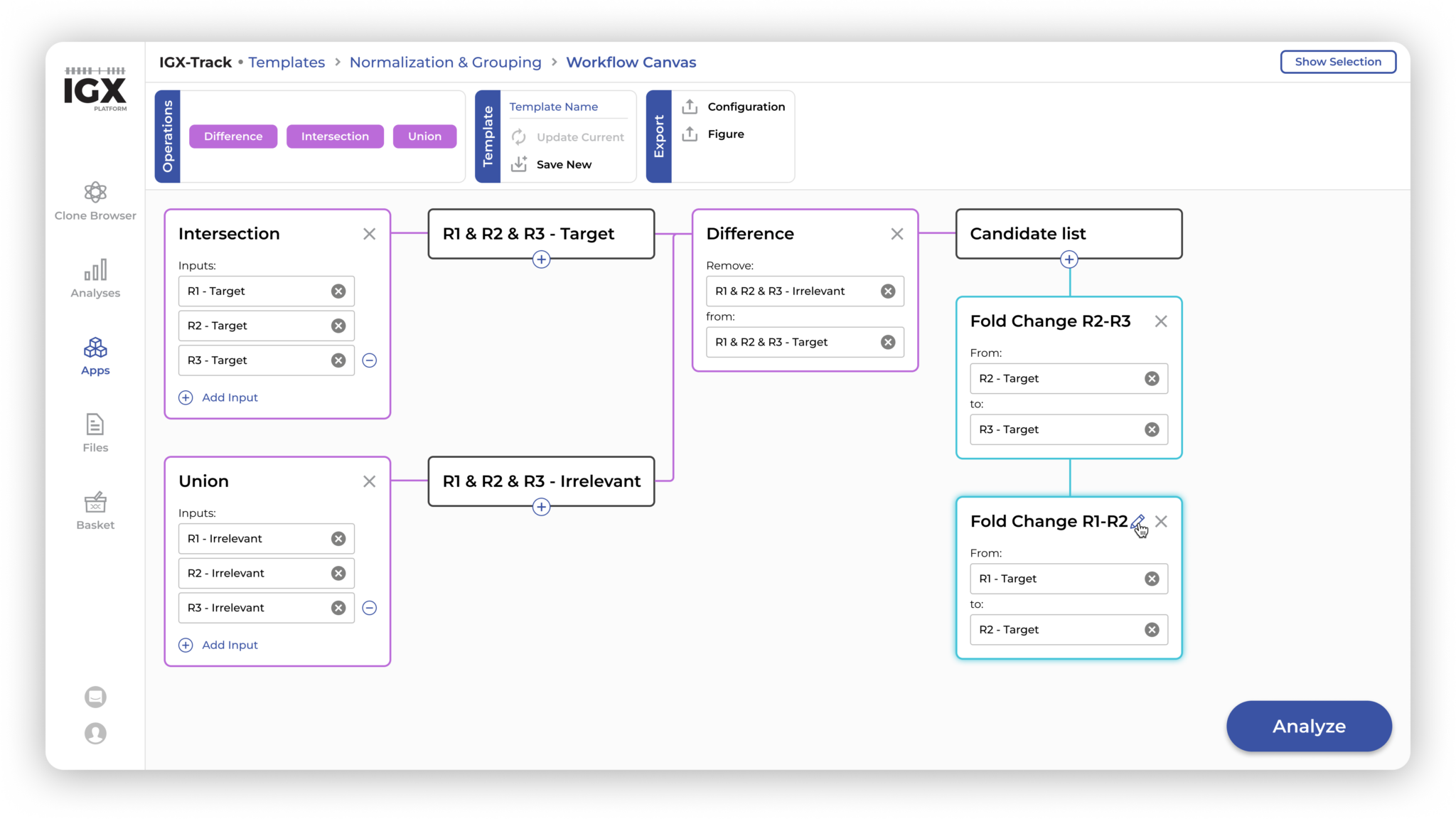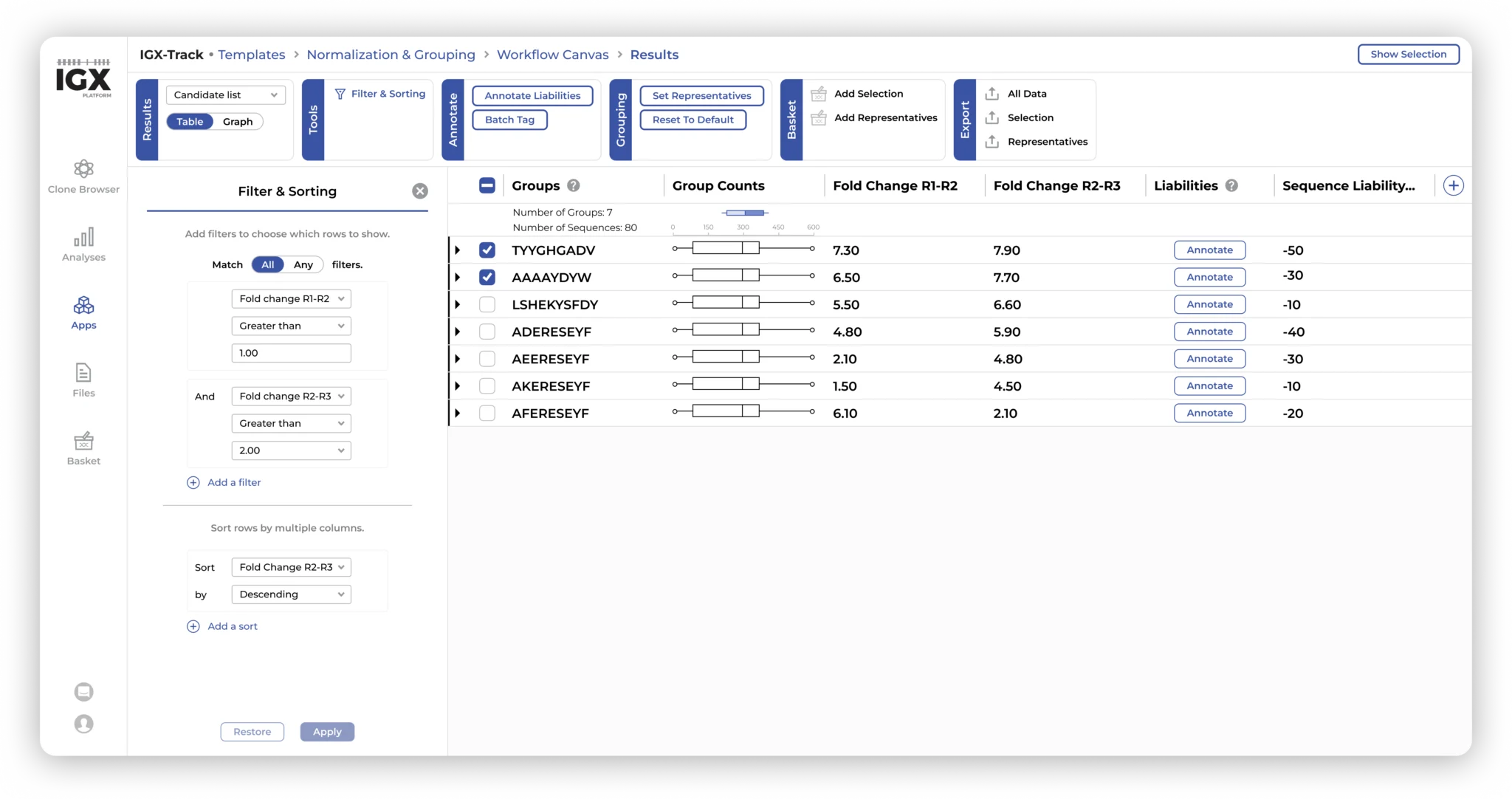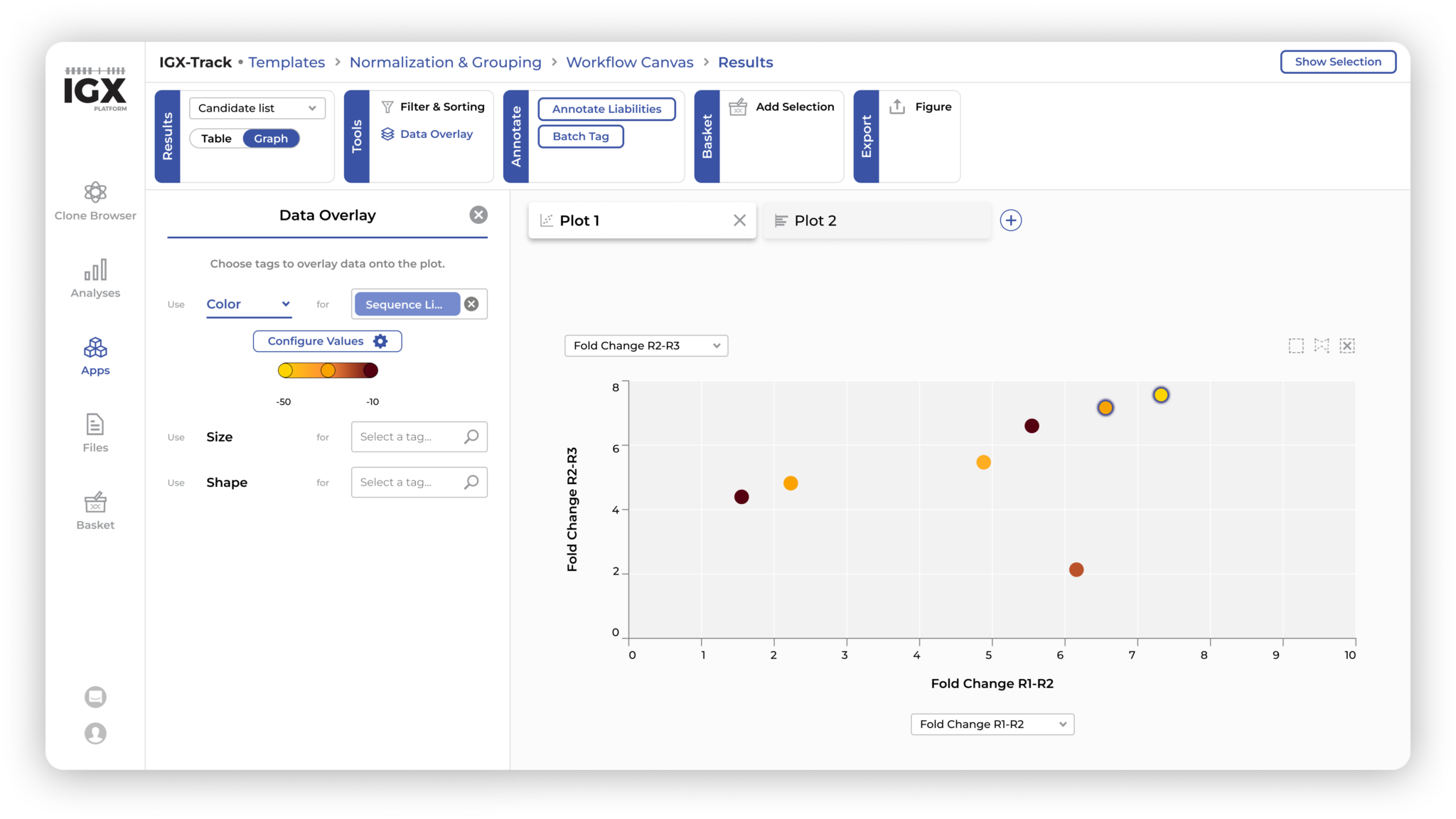“User-centered design (UCD) is an iterative design process with focus on the users and their needs in each phase of the design process.”
User-centered design (UCD) is at the heart of the IGX Platform. We advocate the voice of our customers and continuously involve them in all phases of product design and development. By placing our customers at the core of our design and development process, we create intuitive, effective, and user-friendly software that empowers researchers to navigate the intricate landscapes of immune repertoire sequencing data. Previously, we talked about how good UX practices can greatly improve and accelerate the interrogation of biomedical data. In this article, we will take a closer look at the UCD process and how we successfully applied it to our IGX-Track App.
Why does UCD matter?
User-centered design aims to create user-friendly, intuitive products that cater to the needs of their intended audience. For users, it means higher productivity and overall satisfaction with the software. From a company’s perspective, embracing user-centered design can drive higher adoption rates, foster customer loyalty, and provide a distinct competitive advantage.
What is our process for UCD?
In the product discovery phase, our efforts are dedicated to understanding the needs and pain points of our customers through in-depth interviews. We synthesize all the insights we obtain from multiple sources to create an overview of the challenges researchers face and the goals they want to reach. With this overview at hand, we can identify common threads and progress to the ideation phase where we come up with potential solutions that satisfy the needs of our users and solve the pain points in their workflow.
In the concept validation phase, we invite our customers to interact with mockups and prototypes to obtain valuable feedback. We validate the design assumptions that were made during ideation and continuously incorporate any feedback to generate new iterations of our designs. By closely collaborating with our users during these phases, we can identify and solve usability issues or discover missing features, and ultimately ensure that we develop the product that our users need to accomplish their research goals.
After several iterations and refinement of our mockups and prototypes, we enter the development phase. During this phase, the software development team uses high-fidelity mockups from previous phases to implement and build the product. Similar to previous phases, users are involved in alpha- and beta-testing prior to product launch.
After we launch our products, user feedback still plays an essential role in continuously evolving the products to better fit our customers’ workflows. We actively invite all our users to share feedback, so we can provide an even better experience.
Real-life example: Designing IGX-Track
To illustrate how UCD has played a crucial role in the development of the IGX Platform, let’s take a look at IGX-Track. This IGX App provides a fast, intuitive way to perform enrichment analysis.
Discovery
We found that researchers were processing their display technology data in Excel or using custom scripts. This brought the following pain points:
- Complicated operations, such as performing subtractions or intersections were impossible to set up without expert knowledge.
- Applying filters and sortings to results was not intuitive, and generated graphs were inflexible and not interactive.
- Incorporating metadata, such as affinity or liability information, into decision making was very hard to do.
Ideated solution
To enable users to effortlessly discover enrichment patterns, incorporate valuable metadata, and generate insights from display data, we developed a tailored App that addressed the identified pain points by:
- Providing an intuitive user interface where users can visually set up their enrichment analysis by dragging and dropping operations such as taking intersections or subtractions.
- Linking tables and associated graphs, so filters, sortings, and selections are always kept in sync.
- Providing ways to easily view and overlay metadata directly onto graphs.
Easily configure any enrichment analysis workflow by drag-and-drop.
Apply filters, sort and add any metadata to Results tables.
Customer outcomes
Scientists can now focus on exploring the relationship between variables and data patterns instead of wasting time curating tabular data, writing complex scripts and generating charts in messy Excel sheets. Moreover, users can easily narrow down the candidate pool and pick the top antibody candidates by inspecting enrichments of clones across different panning rounds and applying sensible thresholds (e.g., clones with the lowest liabilities).
Easily generate graphs with comprehensive metadata overlays.
Final thoughts
We see our user-centered approach as the “DNA” of our IGX Platform. We create tools that allow our customers to focus on their research and advance our understanding of disease and discover novel therapies. Our user-centered approach puts the needs of our users front and center and gives us the confidence to build products we know will meet our users’ expectations and are a joy to use.
Would you like to see our intuitive platform in action? Contact us to schedule a personalized demo!
References
- User Centered Design
https://www.interaction-design.org/literature/topics/user-centered-design - User Centered Design Principles & Methods
https://xd.adobe.com/ideas/principles/human-computer-interaction/user-centered-design/ - The Double Diamond: A universally accepted depiction of the design process
https://www.designcouncil.org.uk/our-work/news-opinion/double-diamond-universally-accepted-depiction-design-process/




